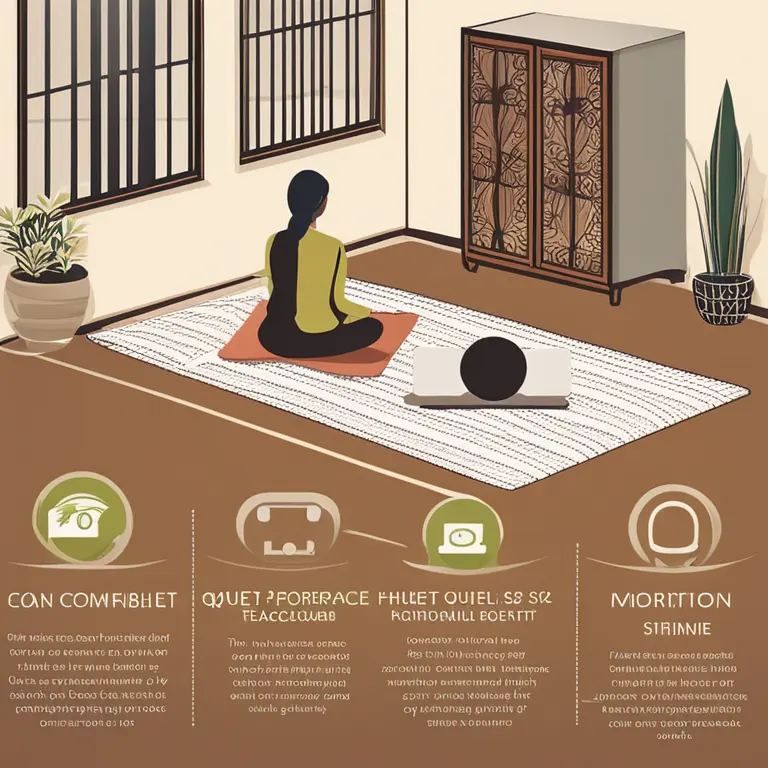
Beginner's Journey to Mindful Meditation
Embark on a journey of inner peace with this beginner's guide to mindful meditation, offering step-by-step instructions and practical tips.
article by Hina Kurosawa
Introduction to Mindfulness
Embarking on the practice of mindfulness meditation can be a transformative experience. At its core, mindfulness is about being fully present and engaged in the moment, with a non-judgmental awareness of one's thoughts, feelings, and sensations. This simple yet profound practice provides a foundation for greater awareness and can lead to reduced stress, improved concentration, and a sense of calm. For those new to this practice, a few basic steps will set the foundation for a fulfilling meditation journey.

Creating Your Meditation Space
Before diving into mindfulness meditation, it is essential to create a conducive environment. Find a quiet, comfortable place where disturbance is minimal. This doesn't need to be a perfect sanctuary but should be a space where you can sit undisturbed for a period of time. Whether it's a corner of your living room, a spot on your bedroom floor, or even a peaceful outdoor setting, what matters most is that it feels suitable for your practice.

Setting a Regular Schedule
Consistency is the key to establishing a meditation practice. Decide on a time of day when you can reliably take a break from your daily tasks. Whether it’s first thing in the morning, during a midday pause, or in the evening, the goal is to incorporate meditation into your routine. Beginners may benefit from shorter, 5-10 minute sessions, gradually increasing the duration as they become more comfortable with the practice.

Establishing the Basics
To start, sit comfortably, with your spine straight but not rigid. You can sit on the floor with cushions, on a chair with feet flat, or in any position that keeps your body relaxed yet alert. Close your eyes or keep them softly focused on a spot in front of you. Place your hands on your knees or in your lap in a way that feels natural. The essence of your position should be one of ease and steadiness.
Engaging in the Mindfulness Practice
Begin your meditation by focusing on your breath. Notice the sensation of air entering and leaving your nostrils, or the rise and fall of your chest or abdomen. When your mind wanders, as it almost inevitably will, gently acknowledge it and bring your focus back to your breath, without judgment. This act of returning to the breath is the heart of mindfulness practice. Each time you do so, it's like a mental rep. You are strengthening your mind’s ability to be present and aware.
Overcoming Challenges
As a beginner, it’s normal to encounter some challenges. You might feel restless, become distracted by noises, or find unwelcomed thoughts creeping in. When this happens, it's important to remember that these experiences are part of the practice. Instead of becoming discouraged, use these obstacles as opportunities to cultivate patience and compassion towards yourself. Over time, you'll find your periods of focus become longer and the distractions less powerful.
Expanding Your Practice
Once you become more comfortable with your daily meditation, you can start exploring other mindfulness exercises. You might incorporate walking meditation, mindful eating or engage with guided meditations. There are numerous resources available, including apps, books, and online courses that cater to all levels of practice. Remember, the journey of mindfulness is personal and unique, so let your curiosity guide you to what feels most beneficial for your growth.
Published: 1/18/2024
Modified: 1/18/2024
More predictions
Come back here soon to learn more about yourself and your future


Mastering The Path Of Mindfulness Meditation
Discover the serene path of mindfulness meditation with this comprehensive guide designed to help you find inner peace and clarity.


Mindfulness Meditation: A Path to Lasting Happiness
Discover how mindfulness meditation can enhance your sense of wellbeing and lead you to a happier life in this insightful article.


Mindfulness & Meditation: Enhancing Cognitive Flexibility
Discover how mindfulness meditation can foster cognitive flexibility, improving your ability to adapt to new situations and think creatively.